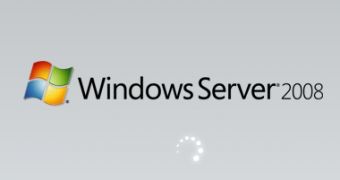Did Microsoft artificially slap the Service Pack 1 label on Windows Server 2008 in an effort to drive adoption? It is not only an aspect associated by default with the process of adopting new Windows operating systems, both client and server platforms, but also a generalized practice to wait for the first Service Pack release as the sign of a product's maturity before migrating/upgrading. This perspective is intimately connected more with corporate consumers than with end users.
And this trend has been made prominent by the release of Windows Vista. Companies such as Intel and Dell have completely ignored Vista revealing that they would only make the jump to the new Windows client following the implementation of Service Pack 1, well after a year since Vista was launched, and even as much as a year and a half considering the November 2006 business release of the operating system. In this regard, Microsoft, citing the necessity to synchronize the Windows client and server operating systems, namely Vista and Windows Server 2008, has released its latest platform with the SP1 label instead of RTM. However, Microsoft denied that Windows Server 2008 SP1 is simply a marketing trick designed to speed up the adoption of the product.
"At first glance you may think it strange that a first version of a product would already be at SP1 level," said Kevin Remde, IT Pro Evangelist for Microsoft. "We call it Service Pack 1 because it IS of a higher quality. Windows Server 2008 is indeed of a higher quality, just like Windows Vista SP1 is of a higher quality than Windows Vista pre-SP1. It is no mistake that Windows Server 2008 and Windows Vista SP1 were released to manufacturing on the very same day. They have much of the same code base. Most all of the security, performance and reliability benefits you get from the new OS are available in both the Desktop and Server, because they share a common base of code. We keep a common deployment model, update model, and servicing model. Keeping them in sync is a HUGE benefit - both selfishly as a software vendor, but more importantly as the end-user IT Pro managing the support and update process for your company."
Remde flat out denied that Windows Server 2008 SP1 was about marketing. Even though it makes sense. By taking the RTM version directly to Service Pack 1, Microsoft has managed to, at least in theory, convince customers not to wait for SP1 in order to adopt the server platform. At the same time, there is no way to predict how SP1 will influence uptake, and if customers will not simply wait for SP2. "I doubt that you'll see 'SP1' on any sales material or other marketing. It's not a sales ploy. It's simply an indication that the code is at the same level. I know for a fact that the SP1 designation has nothing to do with sales. You're smarter than that," Remde added.

 14 DAY TRIAL //
14 DAY TRIAL //